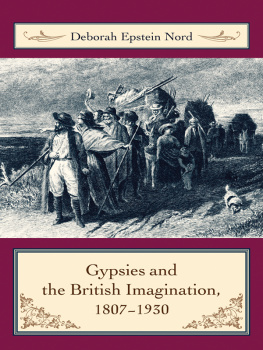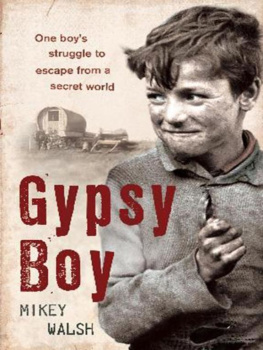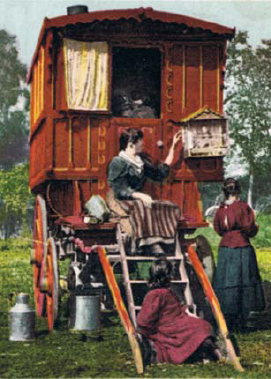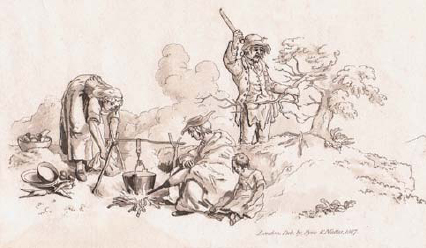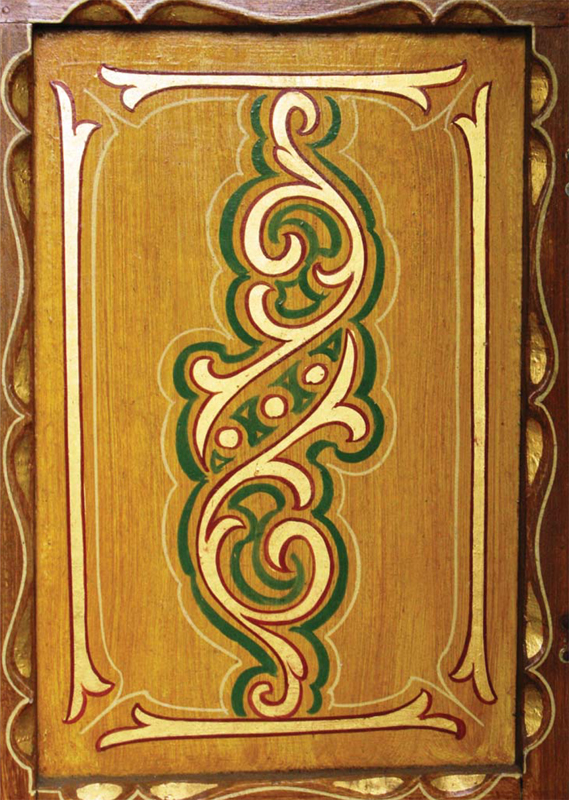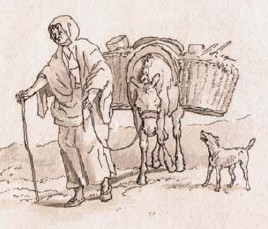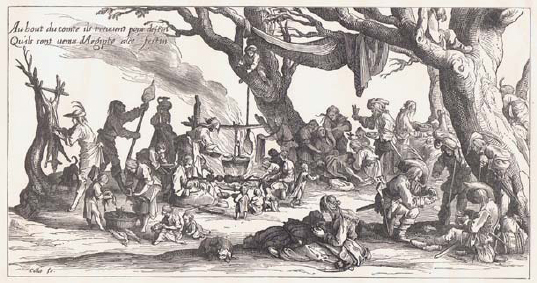GYPSIES OF BRITAIN
Janet Keet-Black
A postcard by an unknown publisher. Birds were sometimes used in fortune-telling.
SHIRE PUBLICATIONS
Travellers Reposing, an original print published by Pyne & Nattes in 1807.
CONTENTS
A cupboard door inside the Durham vardo exhibited at Ryedale Folk Museum. It is painted freehand in yellow, crimson and grass green, colours that are popular in wagon decoration.
INTRODUCTION
T HE IMAGE OF A GYPSY as a carefree, swarthy, dark-haired nomad wandering aimlessly round the country in a brightly painted caravan has been perpetuated by generations of artists and writers who have chosen to portray romantic fiction rather than the often stark reality. Unfortunately, this colourful image has become a yardstick by which the authenticity of the true Gypsy continues to be measured. It is commonly believed that the real Gypsy disappeared along with the horse-drawn living wagon, a belief partly based on the occurrence of fair skin and blue eyes amongst the Travellers of modern times. But out marriages with the settled population account for the eye colour and, as they did for milkmen and other tradesmen, motor vehicles displaced horse-drawn wagons as the preferred mode of travel: the wagon had served its purpose for the time, as had the donkey and cart before that. Gypsies have been part of British history for over five hundred years and have remained apart from other travelling groups that have appeared over the years. The similarities in lifestyle and occupations of the different groups have blurred the distinction for the casual observer, resulting in a misconception that all Travellers are Gypsies. They are not, and similarly not all Gypsies are Travellers.
In Britain Gypsies and Scottish Travellers are recognised ethnic minorities, each of them having their own traditions and culture, the origins of which stretch back for centuries. Their relationship with the settled community has not always been an easy one. From the outset, Gypsies have been regarded with suspicion. A propensity for fortune-telling created an air of mystery and, when not engaged in work or trade, they also kept their distance, travelling light in order to make a swift departure.
The apparent ease with which they disappeared here today, gone tomorrow perhaps explains why they were sometimes described as the secret people, and yet they have contributed to all areas of British life: as service providers, bringers of news, entertainers, preachers, and in military and war service.
TRAVELLING GROUPS IN BRITAIN
I T COULD EASILY be supposed that, before the invention of the bicycle, our ancestors barely moved outside their own parish boundaries, unless they were fortunate enough to own a horse and cart on which to travel into the nearest town or to an adjacent village. It may be true that generations of some families remained within a 10-mile radius of their birthplace but, out of necessity, others were forced to travel much further afield to seek employment. Many travelled as a way of life, following the traditions of their forefathers and remaining separate from, but to some degree dependent upon, the settled communities through which they passed.
For a variety of reasons, Britain has always had an itinerant population. In Tudor times poverty was widespread and, driven by the need to survive, labourers travelled in search of work, particularly when harvests were poor. Soldiers, on their return from fighting overseas, were left at the coast to find their own way back to their homes, begging on their way for food to survive, and pedlars and petty chapmen criss-crossed the country with their wares. Swelling their numbers were the dispossessed, domestic servants who had been dismissed, the militia, and artisans following essential trades such as thatching and masonry.
Before the advent of living wagons or caravans travel was by horse and cart or on foot. An original print published by Pyne & Nattes in 1807.
By the fourteenth century a large network of fairs had been established across the country by royal charter. These drew people from far and wide and, although initially for trading, they later attracted those who provided entertainment, including travelling musicians, strolling players, clowns and acrobats, all of whom saw an opportunity to part the visitors from their money. Sideshows and booths offering the spectacle of human and animal curiosities came later. Britains modern travelling fairs and circuses can trace some of their origins back to those times.
A substantial network of canals had grown up by the early nineteenth century. Crews to man the boats were recruited from those who had once worked as labourers. For these boatmen, the movement of cargo in an increasingly competitive market necessitated many days spent away from home. Whole families began living and working on the boats, with children being born along the way. Over time a distinct community evolved. They developed their own style of dress and began to paint their narrowboats with bright motifs and pictures. It was perhaps because of this similarity with the painted wagons of the Romanies that the two groups were thought to be connected, with the canal folk becoming wrongly identified as water Gypsies.
The Romanies or Gypsies are not indigenous to Britain. When they first appeared in Britain, they were believed to be Egyptians, the word becoming shortened to Gyptian, and then eventually to Gypsy, the term now erroneously applied to almost anyone following an itinerant lifestyle. Since then, there has been much speculation as to their true origins, but their language Romani or Romanes, which is a form of Sanskrit suggests that the Gypsies of Europe have their origins in north-west India, the first groups having left there over one thousand years ago. Some, it is believed, were driven out by invading Turks and Arabs, or taken as slaves to Persia, while others left of their own free will in search of work.
A fair day in the 1830s. Fairs were an important part of Gypsy life, providing opportunities for trade and a meeting place for family members.
An encampment of Gypsies in Europe. Gypsies in Britain would have been of similar appearance. From an old print of a 1604 engraving by Jacques Callot.
There appears to have been no mass exodus from India; rather, they departed in groups over a period of time. Inevitably, words were picked up from whichever country they spent time in, and from these it has been possible to work out the probable routes taken during their travels, and the length of time spent in each country visited.




